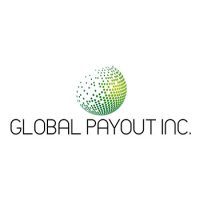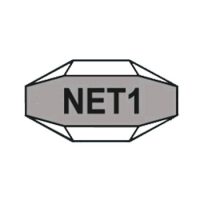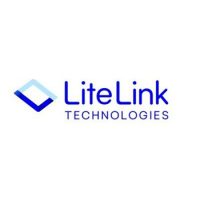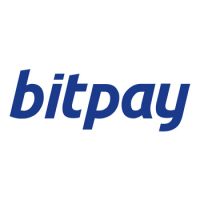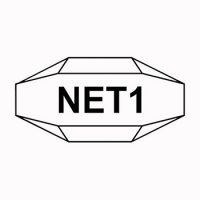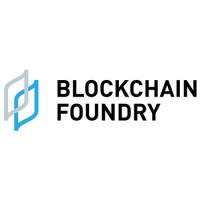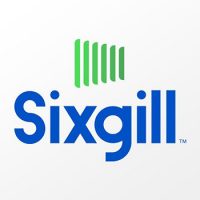Blockchain Press Releases
Global RF Filter Market Anticipated to Garner $48,095.60 Million, Growing at a 16.6% CAGR in the 2022-2031 Timeframe | Research Dive

NEW YORK, June 22, 2023 /PRNewswire/ — The global RF filter market is expected to grow primarily owing to the demand for a high-performance RF filter. Mobile phone communication sub-segment is expected to flourish immensely. The market in the North America region is predicted to grow at a high CAGR by 2031.
Global RF Filter Market Forecast Analysis:
As per the report published by Research Dive, the global RF filter market is expected to register a revenue of $48,095.60 million by 2031, growing at a CAGR of 16.6% during the forecast period 2022-2031.
Segments of the RF Filter Market
The report has divided the RF filter market into the following segments:
- Voltage: SAW filter and BAW filter
- SAW Filter – Highest market share in 2021
The rising need for IoT devices in a variety of industries such as automotive, healthcare, and smart home applications, as well as the growing demand for high-speed data transfer and the implementation of 5G networks, are expected to boost the sub-segment in the 2022–2031 timeframe. - Application: navigation, radio broadcast, TV broadcast, mobile phone communication, satellite communication, aerospace and defense, and others
- Mobile Phone Communication – Most profitable in 2021
The increasing need for mobile devices with higher speeds for data and better network connectivity and the rising demand for upgraded mobile network infrastructure and advanced mobile devices are expected to propel the sub-segment forward. - Region: North America, Europe, Asia-Pacific, and LAMEA
- North America – Significant market share in 2021
The need for high-speed Internet and the expanding use of tablets, smartphones, and other wireless communication technologies are predicted to propel the market in the forecast period.
To get access to the Complete PDF Sample of RF Filter Market Click Here!
Dynamics of the Global RF Filter Market
The rising demand for wireless communication systems, such as tablets, smartphones, and other portable gadgets, is expected to make the RF filter market a highly profitable one in the forecast period. Additionally, the increasing use of advanced technologies such as artificial intelligence (AI) and the Internet of Things (IoT) is predicted to propel the market forward. However, the high cost of RF filters might become a restraint in the growth of the market.
The growing adoption of mobile devices is predicted to offer numerous growth opportunities to the market in the forecast period. Moreover, the increase in use of advanced wireless technologies, such as 5G, is expected to propel the RF filter market forward in the coming period.
COVID-19 Impact on the Global RF Filter Market
The COVID-19 pandemic has had a moderate impact on the RF filter market. During the pandemic, supply chain delays and industrial closures hampered the production and delivery of RF filters. However, the demand for RF filters increased as more individuals began working from home and depended significantly on wireless communication devices for both professional and personal connections. Therefore, there was an increasing need for dependable and high-quality wireless communication, which raised the necessity for RF filters. These factors had a significant impact on the market growth amidst the pandemic.
Check out COVID-19 Impact on RF Filter Market. Connect with an Expert Analyst or Schedule a call
Key Players of the Global RF Filter Market
The major players of the market include
- Analog Devices Inc.
- NXP Semiconductors N.V.
- STMicroelectronics
- Broadcom Inc.
- Murata Manufacturing Co. Ltd.
- Anatech Electronics Inc.
- K&L Microwave
- API Technologies
- RS Microwave Company Inc.
- Bird Technologies
These players are working on developing strategies such as product development, merger and acquisition, partnerships, and collaborations to sustain the market growth.
For instance, in October 2021, Qualcomm Technologies, Inc., the world’s foremost wireless technology inventor and the driving force behind the launch, development, and deployment of 5G, launched the Qualcomm® ultraBAW RF filter technology for bands up to 7 GHz. This new technology is a further advancement on the firm’s modem-to-antenna solution that powers high-performance 5G and connectivity systems throughout wireless product segments.
What the Report Covers
Apart from the information summarized in this press release, the final report covers crucial aspects of the market including SWOT analysis, market overview, Porter’s five forces analysis, market dynamics, segmentation (key market trends, forecast analysis, and regional analysis), and company profiles (company overview, operating business segments, product portfolio, financial performance, and latest strategic moves and developments.)
More about RF Filter Market:
- The Rise of Advanced Technologies: Catalysts for the RF Filter Industry
- Growing Demand for Mobile Devices among Individuals Worldwide to Augment the Growth of the Global RF Filter Market by 2031
Some Trending Reports:
- The Global Display Dielectric Materials Market is predicted to be valued at $113.1 billion by 2032
- The Global Electronic Protection Device Coatings Market Size is predicted to be valued at $1,935.3 million by 2032
- The Global Electric Fuse Market is predicted to be valued at $9,246.30 million by 2031
About Research Dive
Research Dive is a market research firm based in Pune, India. Maintaining the integrity and authenticity of the services, the firm provides the services that are solely based on its exclusive data model, compelled by the 360-degree research methodology, which guarantees comprehensive and accurate analysis. With an unprecedented access to several paid data resources, team of expert researchers, and strict work ethic, the firm offers insights that are extremely precise and reliable. Scrutinizing relevant news releases, government publications, decades of trade data, and technical & white papers, Research dive deliver the required services to its clients well within the required timeframe. Its expertise is focused on examining niche markets, targeting its major driving factors, and spotting threatening hindrances. Complementarily, it also has a seamless collaboration with the major industry aficionado that further offers its research an edge.
Contact:
Mr. Abhishek Paliwal
Research Dive
30 Wall St. 8th Floor, New York NY 10005
(P) +91-(788)-802-9103 (India)
+1-(917)-444-1262 (US)
Toll Free: 1-888-961-4454
E-mail: [email protected]
Website: https://www.researchdive.com
Blog: https://www.researchdive.com/blog/
LinkedIn: https://www.linkedin.com/company/research-dive/
Twitter: https://twitter.com/ResearchDive
Facebook: https://www.facebook.com/Research-Dive-1385542314927521
Logo: https://mma.prnewswire.com/media/997523/Research_Dive_Logo.jpg
View original content:https://www.prnewswire.co.uk/news-releases/global-rf-filter-market-anticipated-to-garner-48-095-60-million-growing-at-a-16-6-cagr-in-the-2022-2031-timeframe–research-dive-301857728.html

Blockchain
Blocks & Headlines: Today in Blockchain – May 30, 2025 (Fraser Edwards, Kyiv NFT, Spirit Blockchain Capital, Indian eHealth, Hedera)

Blockchain technology and cryptocurrencies continue to redefine industries—from competitive gaming and cultural heritage preservation to corporate finance, healthcare, and alternative tokens. Today’s briefing highlights five pivotal developments shaping the ecosystem: Fraser Edwards’s vision for trust in eSports; Ukraine’s wartime cultural preservation via NFTs; Spirit Blockchain Capital’s Q1 2025 operational report; India’s push for blockchain-enabled electronic health records (EHRs); and the rise of viral altcoins such as UniLabs, Sui, and Hedera Hashgraph. Together, these stories illustrate the themes of trust and identity, preservation and provenance, institutional maturation, public-sector innovation, and token diversification. In this op-ed–style round-up, we distill the essence of each story, cite sources, and offer analysis on how they advance Web3, DeFi, and NFT frontiers.
1. Rebuilding Trust in eSports: Can Blockchain Fix Competitive Integrity?
Source: CCN
Summary:
In a recent CCN interview, veteran trader and eSports investor Fraser Edwards argues that blockchain’s immutable ledgers can restore credibility in the rapidly commercializing world of competitive gaming. According to Edwards, match-fixing scandals and opaque prize-pool distributions have eroded fan confidence. By tokenizing tournament entries and payouts on public blockchains—complete with smart-contract–enforced escrow—organizers can guarantee that prize monies are distributed exactly as advertised, and that no post-match manipulation occurs. Tournament operators in Asia and North America are already piloting Ethereum-based payout dApps, aiming to increase transparency for players and sponsors alike.
Key details & analysis:
-
Smart-contract escrow: Funds are held in a time-locked contract that releases prize money only upon verifiable match results. This prevents disputes over referee decisions or delayed payments.
-
On-chain reputation: Player and team reputations can be tokenized via non-fungible reputation badges that accrue based on fair play and community votes—discouraging cheating.
-
Scalability concerns: High-traffic tournaments may require Layer 2 rollups or alternative chains (e.g., Polygon, Immutable X) to reduce gas costs and latency.
Opinion: Blockchain’s dual promise of provable fairness and programmable finance makes it uniquely suited to eSports. Yet adoption hinges on UX: seamless wallet integrations, minimal transaction fees, and clear regulatory guidance on esports tokens.
2. When Art Meets Blockchain: Ukraine’s Wartime Cultural Preservation
Source: The Kyiv Independent
Summary:
As monuments crumble under artillery fire, Ukrainian curators and technologists are partnering to mint NFTs representing lost or endangered artifacts. The Kyiv Independent reports that the National Art Museum of Ukraine has launched “Project Phoenix,” tokenizing high-resolution 3D scans of sculptures, manuscripts, and paintings. Proceeds from initial sales fund restoration and digital archiving efforts. Each NFT embeds provenance metadata—including GPS coordinates, curator notes, and condition reports—ensuring that future generations can verify authenticity and context, even if the physical artifact is destroyed.
Key details & analysis:
-
Metadata richness: Beyond simple ownership, NFTs store structured metadata—using ERC-721 metadata extensions—that capture curatorial insights and conservation logs.
-
Decentralized archives: IPFS and Arweave are employed to host ultra-high-resolution imagery, with on-chain hashes guaranteeing data integrity.
-
Community engagement: Fractional-NFT drops allow diaspora communities to collectively own tokens, strengthening cultural ties and crowdfunding preservation.
Opinion: Blockchain’s ability to immutable record heritage provides a lifeline for war-torn nations. However, ensuring that local institutions retain governance over metadata edits and future migrations is critical to avoiding “cultural colonialism” by global NFT marketplaces.
3. Spirit Blockchain Capital’s Q1 2025 Highlights: Growth, Investments, and Outlook
Source: GlobeNewswire
Summary:
Spirit Blockchain Capital’s Q1 2025 report benchmarks the firm’s operational milestones and financial performance. Assets under management (AUM) climbed 45% to $1.02 billion, driven by strategic allocations to top-tier Layer 1 and Layer 2 protocols, DeFi liquidity pools, and a newly launched token-index fund. Operating income rose 37%, fueled by management fees and performance incentives. The firm also closed its second blockchain-focused venture fund at $150 million, earmarked for early-stage Web3 projects in gaming, infrastructure, and decentralized identity.
Key details & analysis:
-
Diversification strategy: 60% of AUM in blue-chip cryptocurrencies (Bitcoin, Ethereum); 25% in DeFi (Aave, Uniswap, Lido); 15% in tokenized commodities and NFTs.
-
Fund performance: The flagship fund delivered a 9.8% return in Q1, outperforming the 6.2% benchmark set by the Bloomberg Galaxy Crypto Index.
-
Venture investments: Early stakes in zero-knowledge proof startups and decentralized storage platforms signal confidence in scalability and privacy innovations.
Opinion: Spirit’s robust growth and disciplined diversification mirror institutional maturation in the blockchain asset management space. As regulatory clarity improves, expect further inflows from endowments, pensions, and family offices.
4. Blockchain EHRs in India: The Next Digital Health Revolution
Source: ORF
Summary:
The Observer Research Foundation (ORF) details India’s pioneering pilot of blockchain-backed electronic health records (EHRs) in the state of Andhra Pradesh. By leveraging a permissioned Hyperledger Fabric network, the initiative ensures that patient records—from vaccination histories to diagnostic imaging—are securely shared across hospitals, clinics, and pharmacies. Patients control access via digital identities anchored to India’s Aadhaar system, granting temporal permissions for data viewing and preventing unauthorized sharing.
Key details & analysis:
-
Interoperability: HL7 FHIR standards are mapped to on-chain transactions, enabling seamless data exchange with existing hospital information systems (HIS).
-
Privacy safeguards: Off-chain storage of PHI (Protected Health Information) is encrypted with patient-held keys; only hashed pointers reside on-chain to ensure immutability without exposing sensitive data.
-
Regulatory alignment: The pilot aligns with India’s draft Digital Health Act, which emphasizes data sovereignty and patient consent frameworks.
Opinion: Blockchain EHRs can democratize healthcare access in a populous nation—but success depends on user-friendly portals, robust identity verification, and contingency plans for network outages in rural areas.
5. The Hottest Viral Altcoins of 2025: UniLabs, Sui, and Hedera Lead the Pack
Source: TronWeekly
Summary:
According to TronWeekly, the altcoin landscape in 2025 is dominated by three viral tokens: UniLabs (UNI-L), Sui (SUI), and Hedera Hashgraph (HBAR). UniLabs, a governance token for a decentralized laboratory network, saw a 1,200% year-to-date surge on news of its AI-driven drug-discovery partnership. Sui’s Move-based smart-contract platform gained traction for sub-second finality and low gas fees, with total value locked (TVL) surpassing $2 billion. Hedera’s HBAR continues its enterprise pivot, securing multi-year agreements with global brands for identity verification and supply-chain tracking.
Key details & analysis:
-
UniLabs use case: Token holders vote on research grants and share in royalty revenues from patented compounds developed on-chain.
-
Sui performance: With a novel object model and horizontal sharding, Sui supports over 3,000 TPS (transactions per second) without compromising on decentralization.
-
Hedera enterprise: The Governing Council—comprising Boeing, Google, and LG—bolsters confidence in HBAR’s governance model and paves the way for compliant enterprise deployments.
Opinion: These tokens exemplify the diversification of blockchain applications. Investors should assess not only market hype but also protocol fundamentals—developer activity, economic incentives, and real-world adoption.
Cross-Story Trends & Key Takeaways
-
Trust & Transparency at the Core
From esports prize-pool ledgers to wartime NFT archives and permissioned health records, blockchain’s immutability fosters verifiable trust—a prerequisite for mainstream adoption across sectors. -
Institutional & Public-Sector Innovation
Spirit Blockchain Capital’s fund growth and India’s EHR pilot signal that both private and government entities view blockchain as a strategic infrastructure, not just speculative assets. -
Vertical Specialization Fuels Token Growth
Viral altcoins like UniLabs, Sui, and Hedera thrive by addressing niche use-cases—governance in biotech, scalable DeFi rails, and enterprise identity—underscoring the importance of purpose-built protocols. -
Metadata & Provenance Drive NFTs Beyond Art
Ukraine’s cultural NFTs demonstrate how rich on-chain metadata can preserve heritage, while esports applications show that reputation tokens can enforce fair-play credentials. -
Ecosystem Maturation Requires UX & Governance
Across all stories, user experience—wallet onboarding, identity verification, metadata curation—and robust governance frameworks (tokenomics, regulatory alignment) emerge as decisive factors in blockchain’s next wave.
Conclusion
Today’s blockchain headlines reveal a maturing ecosystem where trust, transparency, and targeted innovation unlock new frontiers—from safeguarding digital heritage amid conflict to revolutionizing healthcare and sports. As institutional players allocate billions, and public-sector pilots chart regulatory pathways, the fate of tomorrow’s Web3 landscape hinges on seamless UX, rigorous governance, and demonstrable real-world utility. Stay tuned for tomorrow’s Blocks & Headlines, where we’ll continue tracking the trends, tokens, and technologies that define the blockchain revolution.
The post Blocks & Headlines: Today in Blockchain – May 30, 2025 (Fraser Edwards, Kyiv NFT, Spirit Blockchain Capital, Indian eHealth, Hedera) appeared first on News, Events, Advertising Options.
Blockchain Press Releases
Bybit Earnival Unlocks 4 Weeks of Golden Rewards

DUBAI, UAE, May 30, 2025 /PRNewswire/ — Bybit, the world’s second-largest cryptocurrency exchange by trading volume, is excited to raise the stakes for Bybit Earn users in a four-week long rewards program, the Bybit Earnival. From now to June 22, eligible Bybit users may sign up for the event for a chance to earn up to 555% APR and Gold Tokens.
With paradigm shifts taking place in the global investment landscape, Bybit Earn offers a wide range of yield-bearing products catered to the diverse needs of traders. The offerings unlock access to beginner products with guaranteed returns such as flexible staking, advanced savings products at various risk levels, and tokenized real-world assets including XAUT, a digital token backed by physical solid gold.
For four weeks in a row, Bybit users may check into Bybit Earn for a rewarding experience packed with exclusive perks:
- New User Exclusives: Users new to Bybit Earn can enjoy a boost for Fixed Savings products of up to 555% APR on USDT. The offer applies in the first two days after their initial deposit and staking of 100 to 300 USDT.
- Extra APR Savings Products Every Week: Limited-time savings products with highly competitive APRs, starting at 500 USDT in net deposit, are refreshed daily at 6 AM UTC, with new offers launching every Monday at midnight.
- Weekly Leaderboard Prize: Participants who acquire 3,000 USDT or more weekly in eligible Earn products can compete on the weekly leaderboard to win up to 1,000 USDT in Gold Tokens. Rankings update daily, and rewards are distributed within 7–14 days.
The event is open to verified retail customers with Savings service enabled on Bybit to ensure a fair and even level competition.
Bybit Earn is a popular tool for Bybit users to maximize the earning potential of their idle crypto assets on the trading platform. With a focus on consistent yield and regular promotions for higher APR, Bybit Earn is trusted by millions of users on Bybit, the one-stop solution for all their crypto needs.
Terms and conditions apply. For details and eligibility, users may visit Bybit Earnival.
#Bybit / #TheCryptoArk
About Bybit
Bybit is the world’s second-largest cryptocurrency exchange by trading volume, serving a global community of over 70 million users. Founded in 2018, Bybit is redefining openness in the decentralized world by creating a simpler, open and equal ecosystem for everyone. With a strong focus on Web3, Bybit partners strategically with leading blockchain protocols to provide robust infrastructure and drive on-chain innovation. Renowned for its secure custody, diverse marketplaces, intuitive user experience, and advanced blockchain tools, Bybit bridges the gap between TradFi and DeFi, empowering builders, creators, and enthusiasts to unlock the full potential of Web3. Discover the future of decentralized finance at Bybit.com.
For more details about Bybit, please visit Bybit Press
For media inquiries, please contact: [email protected]
For updates, please follow: Bybit’s Communities and Social Media
Discord | Facebook | Instagram | LinkedIn | Reddit | Telegram | TikTok | X | Youtube
Logo – https://mma.prnewswire.com/media/2267288/Logo.jpg
![]() View original content:https://www.prnewswire.co.uk/news-releases/bybit-earnival-unlocks-4-weeks-of-golden-rewards-302469497.html
View original content:https://www.prnewswire.co.uk/news-releases/bybit-earnival-unlocks-4-weeks-of-golden-rewards-302469497.html

Blockchain
Blocks & Headlines: Today in Blockchain – May 29, 2025 (Vaulta, Fosun, Signing Day Sports, Credit Unions, Gaming Innovations)

Welcome to Blocks & Headlines, your definitive daily briefing on the latest blockchain breakthroughs, cryptocurrency developments, and Web3 innovations. In today’s edition—May 29, 2025—we explore five pivotal stories shaping the decentralized economy:
- FT Analysis: Crypto Regulation and Institutional Adoption
- Signing Day Sports Seals Deal with Blockchain Digital Infrastructure
- Vaulta & Fosun Partner to Power Hong Kong’s Blockchain Backbone
- Transforming Online Gaming: Blockchain’s Next Frontier
- Credit Unions Embrace Blockchain for Trustworthy Financial Services
This op-ed–style roundup delivers concise yet insightful coverage, critical analysis, and expert opinion on each development’s relevance within the broader blockchain and cryptocurrency ecosystem.
1. FT Analysis: Crypto Regulation and Institutional Adoption
Overview. The Financial Times reports on evolving global regulatory landscapes and their impact on institutional cryptocurrency adoption. FT highlights how major funds and asset managers navigate compliance frameworks in the US, EU, and Asia to integrate digital assets into traditional portfolios.
Source: Financial Times
Detailed Analysis. As regulators across jurisdictions craft tailored guidelines—from MiCA in Europe to the SEC’s evolving crypto classifications in the US—institutions face a balancing act between innovation and compliance:
- MiCA’s Market Integrity Measures: New EU rules mandate clear disclosures for stablecoin issuers and exchange operators, raising the bar for consumer protection.
- SEC’s Custody Interpretations: Emerging guidance on digital asset custody models, including qualified custodians versus self-custody frameworks.
- Asia’s Sandbox Approaches: Hong Kong and Singapore expand sandbox programs, offering controlled environments for DeFi and tokenization trials.
Opinion. Regulatory clarity is the linchpin for institutional inflows. While stringent frameworks may seem burdensome, they ultimately foster market confidence and prevent systemic risks. Asset managers should proactively engage with policymakers, leveraging sandbox insights to shape pragmatic, innovation-friendly regulations.
2. Signing Day Sports Seals Deal with Blockchain Digital Infrastructure
Overview. According to TradingView’s Reuters feed, Signing Day Sports has executed a definitive agreement to acquire Blockchain Digital Infrastructure, a profitable data-hosting specialist serving DeFi and NFT platforms.
Source: Reuters via TradingView
Detailed Analysis. The acquisition underscores the rising value of specialized blockchain infrastructure:
- Scalable Data Nodes: Blockchain Digital Infrastructure operates 150+ high-throughput nodes, ensuring low-latency data delivery for real-time sports NFT drops.
- Profitability Metrics: The company reported $32 million in EBITDA last fiscal year, highlighting sustainable revenue in a niche market.
- Strategic Synergies: Signing Day Sports plans to integrate hosted nodes into its upcoming sports collectibles marketplace, guaranteeing seamless token minting during high-traffic events.
Opinion. In Web3, infrastructure is the invisible backbone. For NFT marketplaces and DeFi protocols, node reliability and data throughput directly impact user experience—and ultimately, revenue. This move positions Signing Day Sports to compete at scale, setting a precedent for vertical integration in blockchain hosting.
3. Vaulta & Fosun Partner to Power Hong Kong’s Blockchain Backbone
Overview. Coindesk reports that Vaulta, a leading digital asset platform, is teaming up with Fosun International to develop blockchain infrastructure for Hong Kong’s emerging crypto hub.
Source: CoinDesk
Detailed Analysis. The collaboration aims to build secure, high-performance rails for trading, custody, and tokenization:
- Layer-1 Interoperability: Joint development of a cross-chain protocol connecting Ethereum, Binance Smart Chain, and local DLT frameworks.
- Institutional Custody Solutions: Licensed trust entities under Fosun’s umbrella will offer insured cold-storage services for professional investors.
- Regulatory Cooperation: Partnership includes a liaison with the Hong Kong SFC to ensure compliance with the new Virtual Assets Service Provider (VASP) regime.
Opinion. Asia remains a hotbed for blockchain innovation, but regulatory fragmentation poses hurdles. Vaulta’s alliance with Fosun exemplifies public-private synergy—combining local market expertise, financial strength, and technical know-how to anchor the city’s digital asset ambitions.
4. Transforming Online Gaming: Blockchain’s Next Frontier
Overview. TronWeekly examines how blockchain technologies—especially NFTs and decentralized marketplaces—are redefining online gaming economies.
Source: TronWeekly
Detailed Analysis. Key trends driving gaming’s blockchain revolution:
- Play-to-Earn Economies: Games like Axie Infinity and emergent titles use tokenized rewards and NFT-based assets to create real-world value for players.
- Decentralized Marketplaces: Platforms such as Enjin and Immutable X offer gas-free trading environments for in-game items, enhancing liquidity.
- Cross-Game Asset Portability: Standards like ERC-1155 enable items to move seamlessly between compatible titles, fostering interoperability.
Opinion. Gaming is blockchain’s killer app. Beyond speculative hype, tokenization can democratize game economies, allowing genuine ownership and secondary markets. Developers must, however, tackle scalability and user onboarding frictions—layer-2 solutions and intuitive wallets are essential for mass adoption.
5. Credit Unions Embrace Blockchain for Trustworthy Financial Services
Overview. AP’s business coverage highlights several US credit unions piloting blockchain-based platforms to enhance transaction transparency, reduce settlement times, and cut cross-border remittance fees.
Source: AP News
Detailed Analysis. Examples of credit union blockchain pilots:
- Consortium-Led DLT: A consortium of midwestern credit unions uses a permissioned Hyperledger Fabric network to settle inter-credit-union payments in near real-time.
- Remittance Solutions: Deployment of Stellar-based rails reduces remittance costs by up to 60%, benefiting diaspora communities.
- Member Identity Management: Verifiable credential systems streamline KYC processes, reducing onboarding time from days to hours.
Opinion. As community-focused institutions, credit unions can leverage blockchain to reassert their value proposition—offering cost-effective, transparent services that rival large banks and fintechs. Success will hinge on member education and seamless integration with legacy core banking systems.
Central Themes
Today’s dispatch reveals five core themes:
- Regulatory Engagement: From FT’s analysis to Hong Kong’s VASP regime, clear rules underpin institutional and retail growth.
- Infrastructure Control: Signing Day Sports’ acquisition and Vaulta’s Fosun partnership demonstrate the premium on reliable blockchain rails.
- Economic Innovation: Play-to-earn gaming and credit union pilots show tokenization’s real-world impact.
- Interoperability Focus: Cross-chain protocols and ERC-1155 standards drive seamless Web3 experiences.
- Market Confidence: Institutional adoption and compliance frameworks foster long-term trust.
Conclusion
In today’s Blocks & Headlines, we see blockchain’s evolution from experimental playground to enterprise-grade infrastructure: regulators clarify, institutions invest, communities adopt, and developers innovate. Whether you’re tracking regulatory shifts, infrastructure deals, gaming revolutions, or financial cooperatives, the decentralized ledger continues to reshape industries.
Join us tomorrow for Blocks & Headlines, where we continue to unpack blockchain’s latest breakthroughs—one block at a time.
The post Blocks & Headlines: Today in Blockchain – May 29, 2025 (Vaulta, Fosun, Signing Day Sports, Credit Unions, Gaming Innovations) appeared first on News, Events, Advertising Options.
-

 Blockchain Press Releases3 days ago
Blockchain Press Releases3 days agoRain Expands Support to Solana, Tron, and Stellar, Enabling More Partners to Launch Stablecoin-powered Card Programs
-

 Blockchain Press Releases3 days ago
Blockchain Press Releases3 days agoBybit Secures MiCAR License in Austria, Opens European Headquarters in Vienna with Strategic Expansion Plan
-

 Blockchain Press Releases5 days ago
Blockchain Press Releases5 days agoFlipster Reveals Middle East Expansion Plans and Appoints Regional Leadership to Bolster Crypto Trading
-

 Blockchain Press Releases5 days ago
Blockchain Press Releases5 days agoCoinW Teams Up with Superteam Europe to Conclude Solana Hackathon and Accelerate Web3 Innovation in Europe
-

 Blockchain5 days ago
Blockchain5 days agoBlocks & Headlines: Today in Blockchain – May 27, 2025 Featuring Blockchain.com, Bilal Bin Saqib, XRP Ledger, Unstoppable Domains, ReNEW, MEXC Ventures
-

 Blockchain3 days ago
Blockchain3 days agoBlocks & Headlines: Today in Blockchain – May 29, 2025 (Vaulta, Fosun, Signing Day Sports, Credit Unions, Gaming Innovations)
-

 Blockchain6 days ago
Blockchain6 days agoBlocks & Headlines: Today in Blockchain – May 26, 2025 (Lightchain AI, Cetus Hack, Bilal Bin Saqib, The Blockchain Group)
-

 Blockchain Press Releases6 days ago
Blockchain Press Releases6 days agoAB Charity Foundation X AB Blockchain Join Forces to Advance the Global “Tech for Good” Mission





